(Second of a three-part series. Click here to read Part 1)
The housecleaning began almost immediately. After a competitive bidding process, Arlington Park hired Grafe Auction Company of Rochester, Minn., to tag everything that wasn't nailed to the walls – and everything that was – and sell it all to the highest bidders.
It was Grafe's first liquidation of a racetrack, and its staff didn't know a paddock from a padlock. I offered to help by putting my nearly 50 years of racing experience to work identifying Arlington's vast collection of racing assets and memorabilia. I'd also owned and raced horses at the suburban Chicago track and knew both the frontside and the backstretch areas well. Auction company owner/operator Judd Grafe hired me immediately. Last August, just as the first of the Grafe auctions was getting underway, I strolled through the facility, both to remember…and to forget.
You could park the world's largest aircraft carrier inside Arlington's cavernous 700,000-square-foot grandstand and still have room to land a few planes. Now it sits completely empty, the famous 200-by-600-foot cantilevered roof looming over the empty facility like the lid of a coffin. It's as eerily quiet as a graveyard, too. Thousands of green, Arlington-logoed seats and wood and wrought iron benches – the latter affixed with plastic plaques bearing the epitaph, “Arlington International Racecourse, 1989-2021” – had been tagged for sale and no longer dotted the famous grandstand.
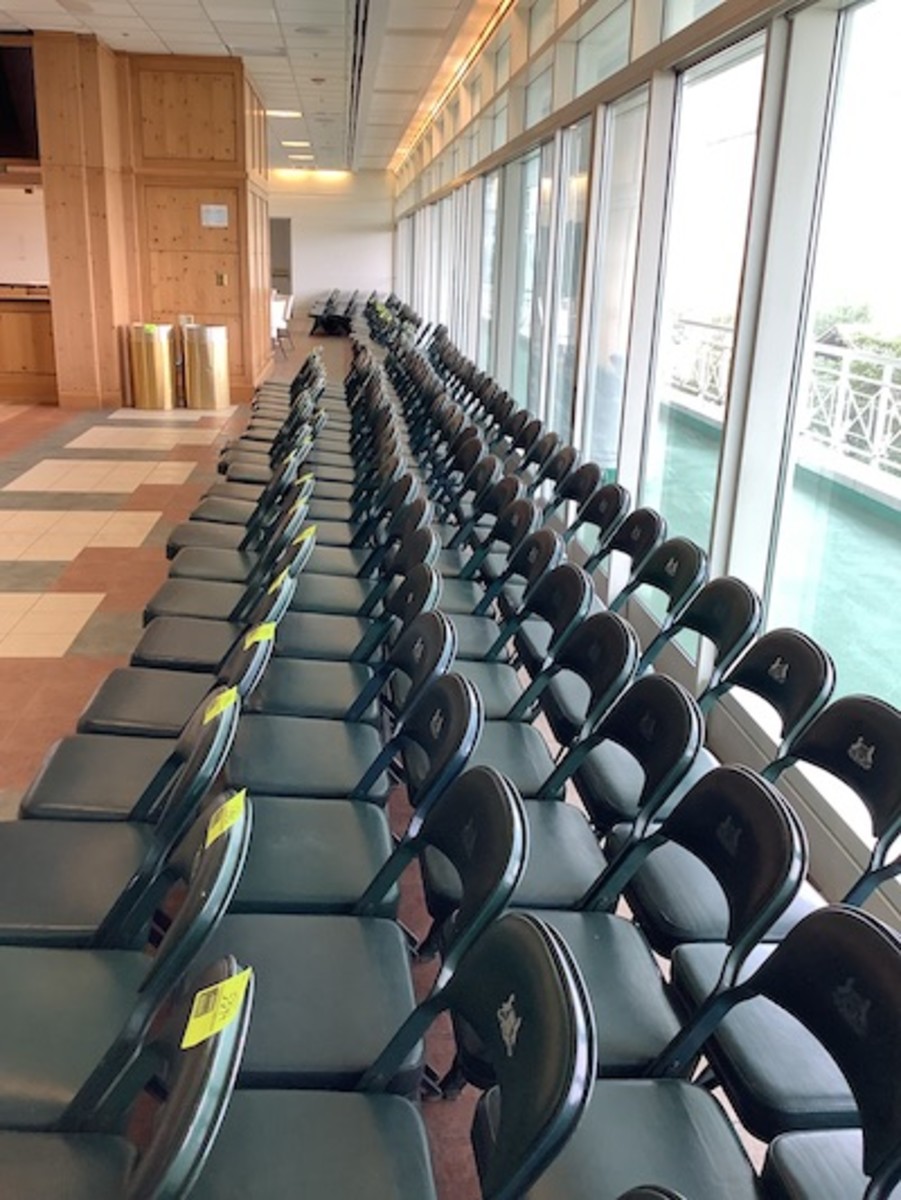
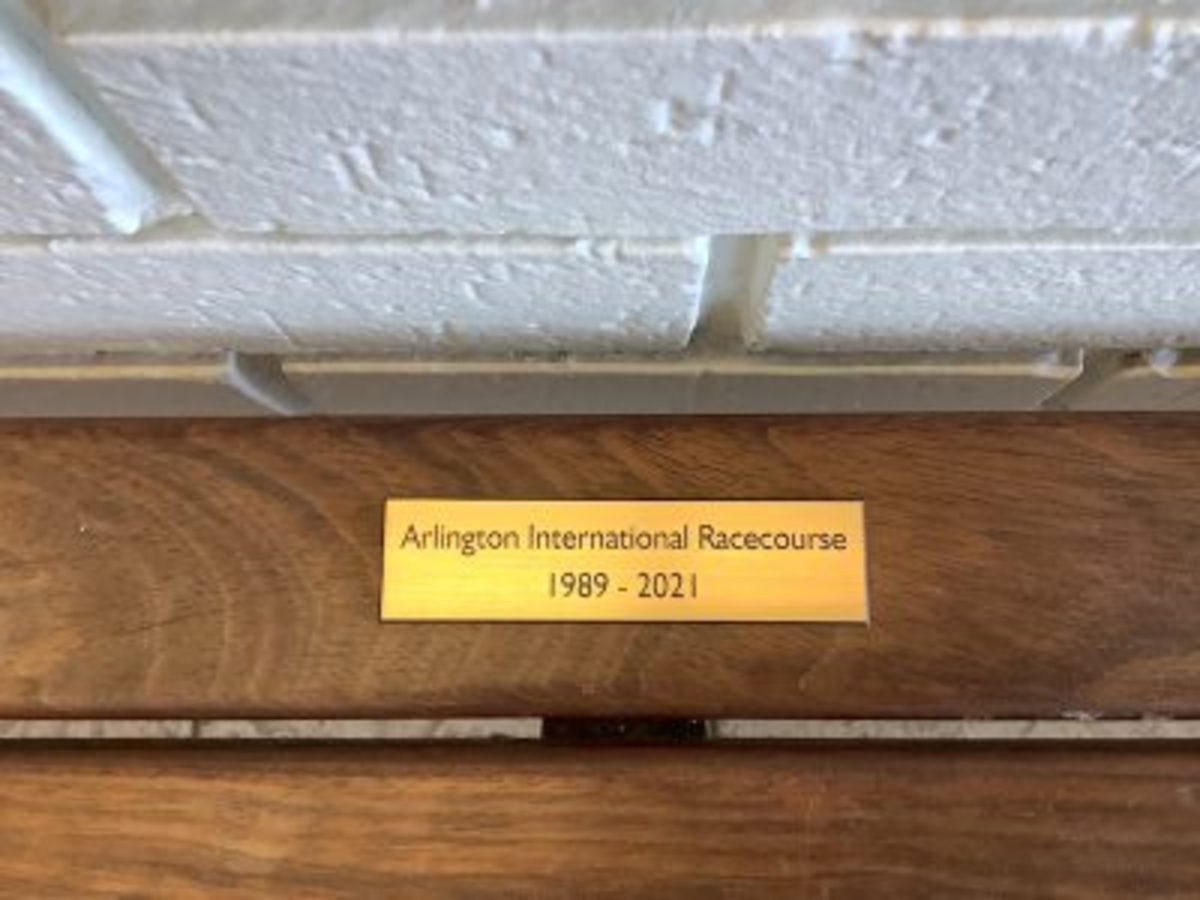
The dormant track shows obvious signs of neglect, with some observers claiming CDI hadn't busted its maintenance budget since it took majority control in 2000. Walking through the frontside I sidestepped piles of debris fallen from walls, jumped rivulets of putrid water in the basement, and navigated around ankle-deep weeds blanketing the paddock and walkways.
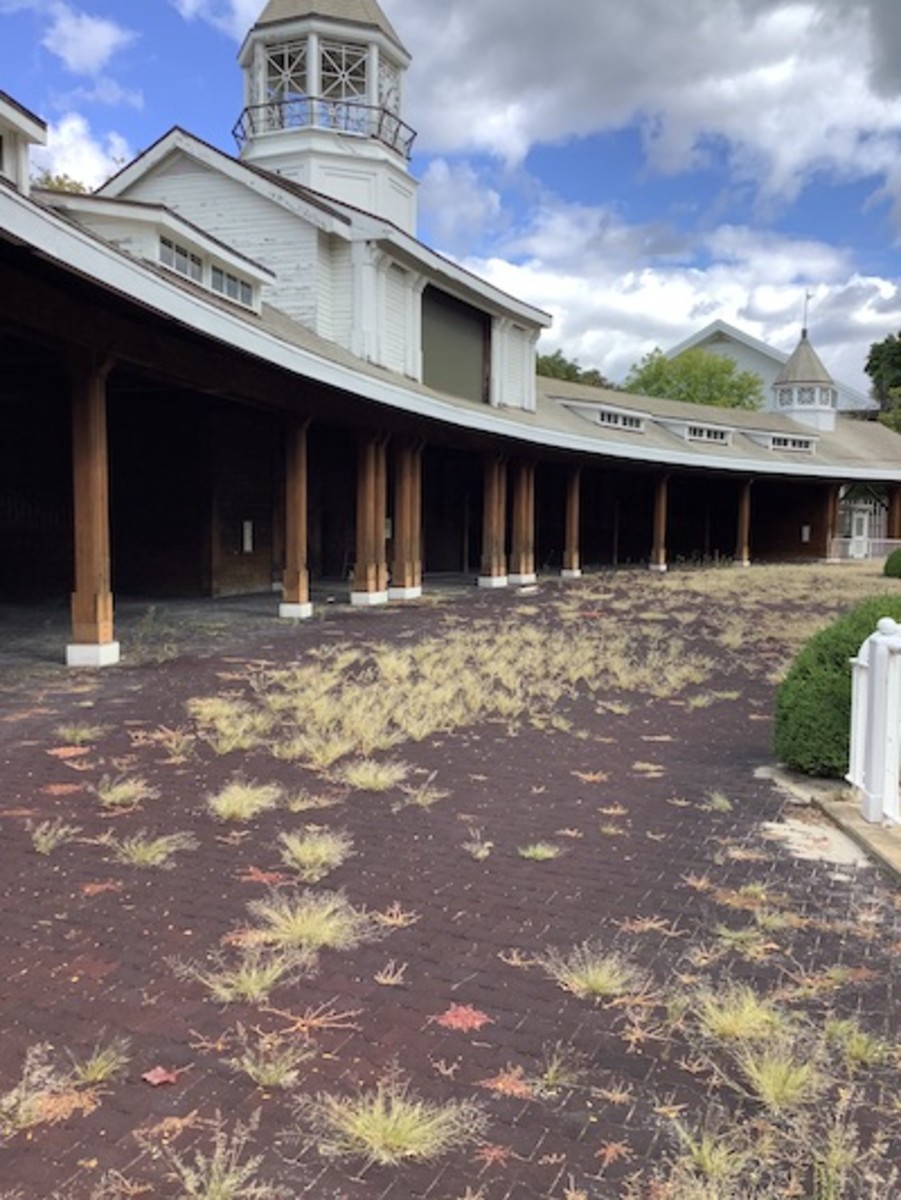
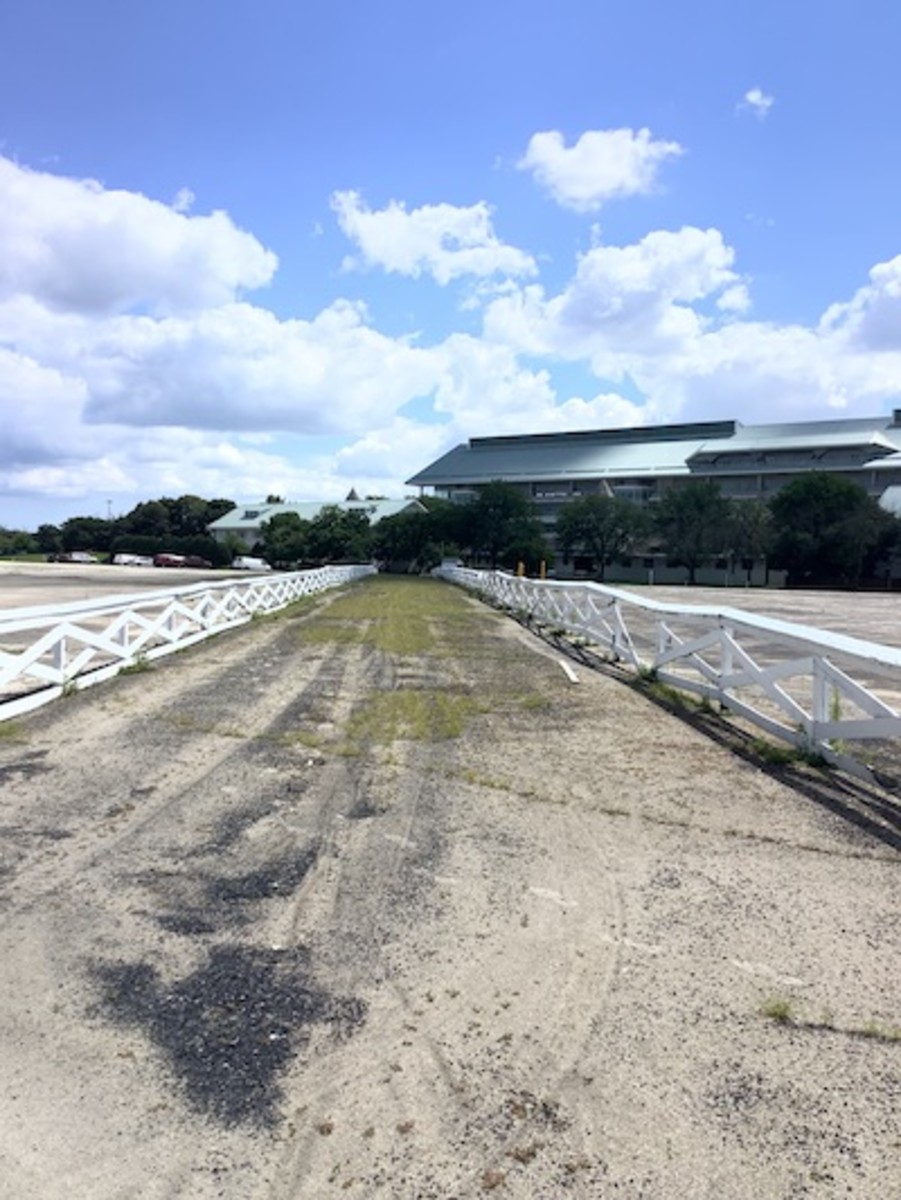
Though the horses were long gone, for some unknown reason a crew of mowers kept the famous turf courses – built with European-style racing in mind – perfectly manicured.

The Finish Line pole had been disassembled and laid to rest in the Winner's Circle, itself an unintended garden of weeds, awaiting a winning bid.
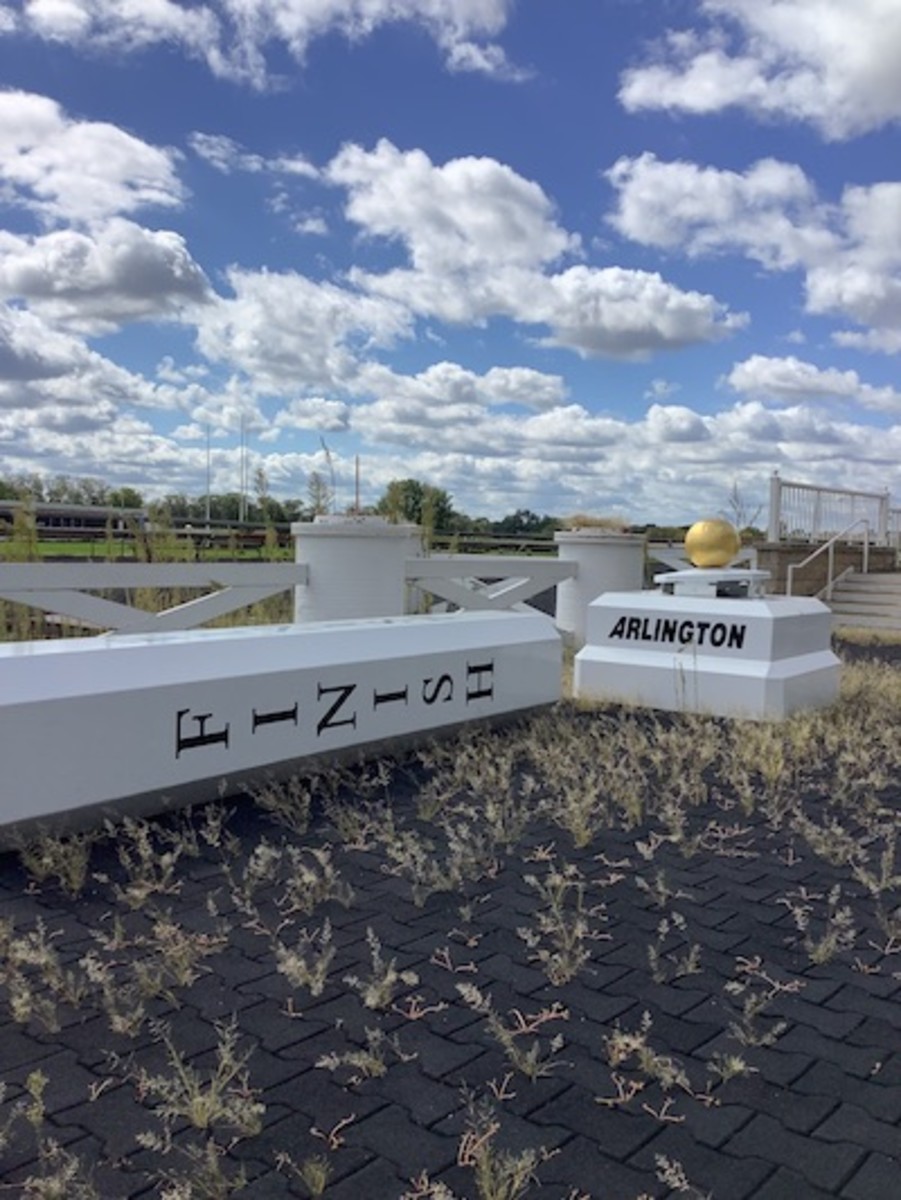
Last September, former jockey Randy Meier, who made Arlington his summer home from 1980 until 2009, visited the track one last time. The 5'3” Meier stood next to a scraggly weed pushing through a crack in the track's apron, the unsightly plant paralleling his forehead.

“This was one of the most beautiful tracks in the country,” he lamented, peering over a rusty rail into the infield. “It's still gorgeous despite what's become of it.”
Many of the looky-loos told me how they'd grown up at the track, maybe tagged alongside a parent or grandparent. Others had held a bachelor's party here, worked a summer as a busboy, or had gotten engaged in the paddock. Auction company head Judd Grafe said, “We are trying to be respectful to the property and the people who have made memories here.” Arlington was special. Auction bidders just wanted a piece of history, to hang onto the track, and their memories, a little while longer.
One of the favorite sayings of the late Richard Duchossois, the longtime Arlington chairman, was, “Don't Expect What You Don't Inspect.” That's as true of Arlington's auctions as at any Thoroughbred sale at Keeneland or Fasig-Tipton. What you see is what you get. At Arlington, every Monday was Preview Day, a chance for bidders (or just gawkers) to inspect what would be sold the next day. Interested bidders registered with Grafe and for the next six months 20 online auctions were held, starting with commercial kitchen equipment harvested from the track's 15 restaurants, food court, and concessions. If you were in search of a nacho chips warmer, you were in luck.
The nacho cheese sauce was offered as well, though a careful bidder might have taken note of its expiration date: Kentucky Derby Day. In 2021.

Many bidders wanted a piece of the track, literally. Plastic bags of Polytrack appeared in an early auction, started to draw bids. Suddenly, they disappeared from the auction catalog, CDI attorneys expressing concern that the synthetic material might pose a choking hazard.
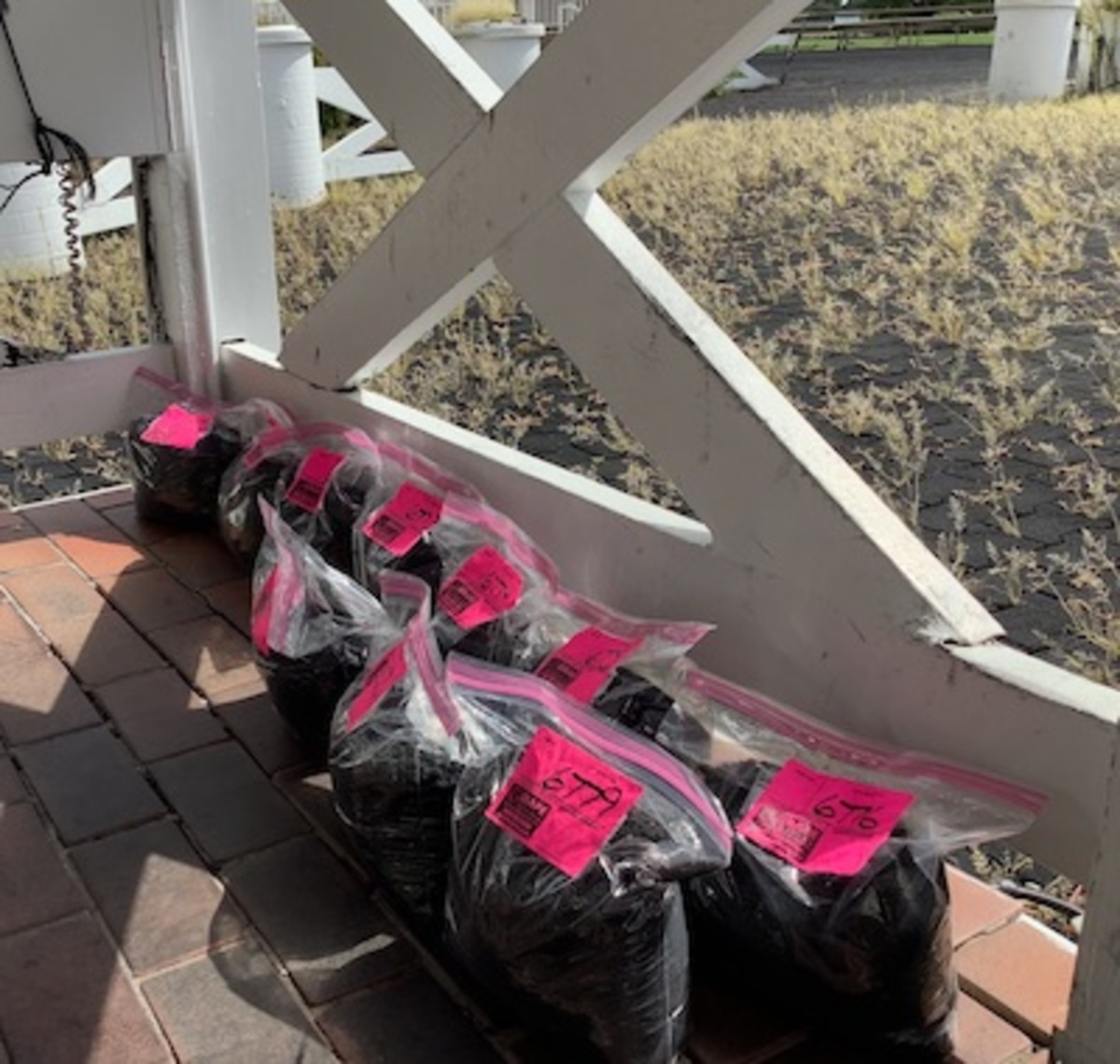
Eight-foot-square sections of interlocking rubber brick from the Winner's Circle each sold in the $40-$75 range; individual bricks sold for about half that. Numbers and words torn unceremoniously from the once-grand infield tote board sold for up to $700 each.
The most mundane items were tagged and sold. Restroom and teller signs, menus, paddock passes, trash cans, elevator signs. Thousands of chairs, tables, TV monitors, electrical cords. Shirts, ties, and belts (from staff offices, not the gift shop). Parking lot signage. Employee handbooks, posters touting special events, old clubhouse tickets. Storage containers and racks. Turnstiles, bill counters, office equipment. Huge quantities of promotional buttons, pens, keychains, pins, hats, shirts, beer koozies, shot glasses, water bottles, tote bags, mobile phone holders. (Perhaps dwindling race day attendance contributed to this overstock.) All the fake – and some real – trees, potted plants, and decorative foliage moved on to new homes.
The ridiculous sold, too. What Arlington employee kept a 6” skull on his desk? (Winning bid: $75)
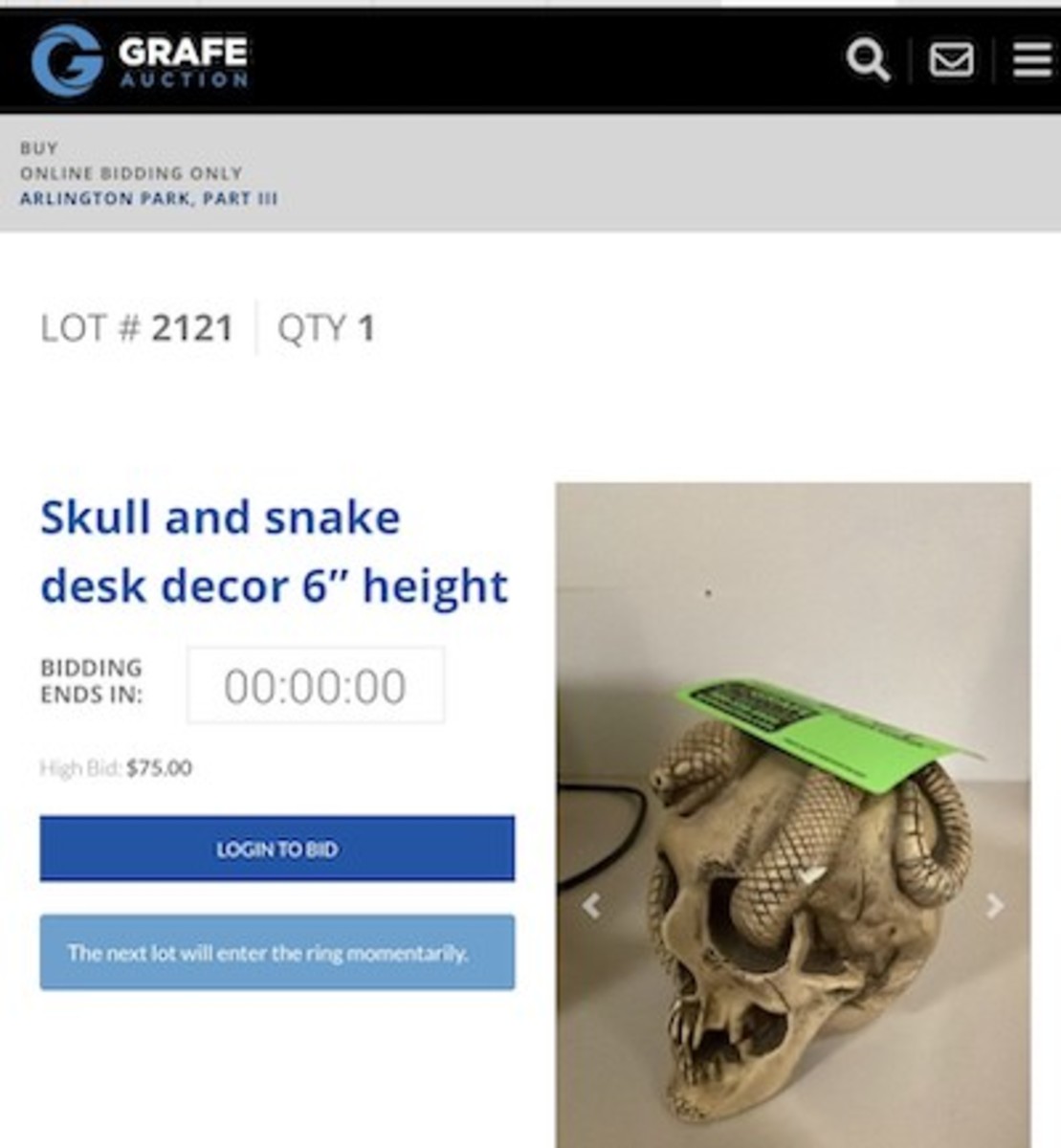
Which office housed the life-sized knight in (rusty) armor? ($375)
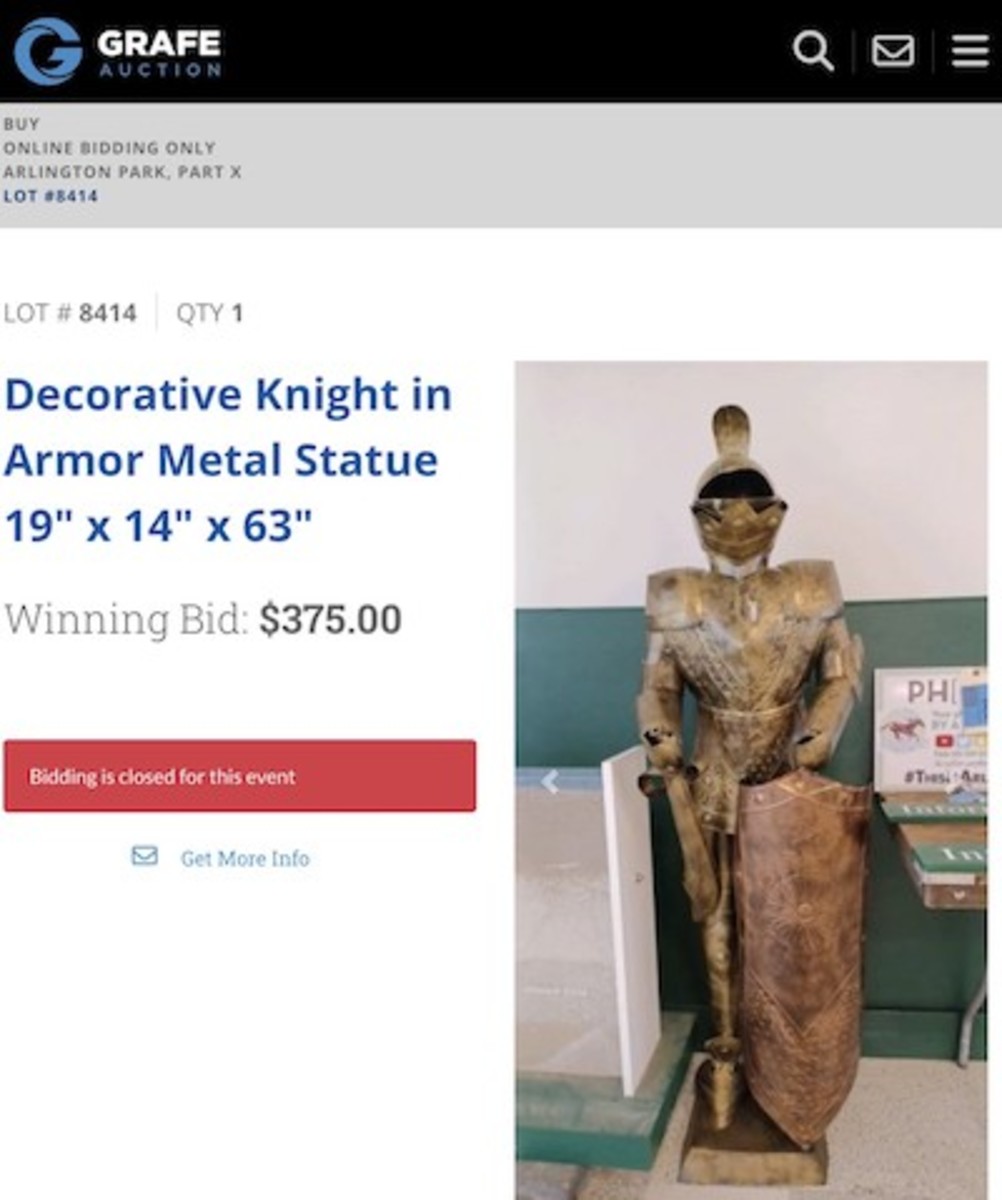
Who really needed the 2 1/2 miles of cotton tongue ties, the distance of two Arlington Millions? ($452) Or 1,250 useless paddock passes? ($140) Why would someone buy 31 brand-new, identical Martex© bed skirts and – better question – why did Arlington even own them? ($131) Artificial Christmas trees, garlands, wreaths, and decorations – available despite the fact that Arlington never ran in December – were tagged for auction and sold just as the holiday approached.
From the ridiculous to the sublime: the contents of Mr. Duchossois' fifth-level luxury penthouse and the famed Million Room (a lot of 40 china plates sold for $1,000) enticed buyers with deep pockets. Few knew the penthouse residence existed; fewer still ever saw it. Fashioned after Queen Elizabeth's private apartment at Ascot, it was mainly used for entertaining celebrities and yielded pricey equestrian-themed art, sumptuous furniture, vintage racing photos, and other décor to the auction.
But the track's artifacts were the biggest draw. Anything bearing the Arlington logo sold. Arlington's two starting gates were purchased by a jockey who prefers to remain anonymous. The Finish Line pole brought a final bid of $3,750. A different bidder took home the photo finish mirror ($160). Furlong poles – both from the turf course and the Polytrack – were hot commodities even though they weren't in the best shape. The 15' one-mile marker brought a winning bid of $220 (not including a hefty $150 “removal/loading fee,” the 18 percent auction house premium, and 10 percent sales tax). It was abandoned by the winning bidder and sat for months in a junk pile near the far turn.

So, too, the jockeys' weigh-in platform from the Winner's Circle; sold for $110 last September, it's still in the parking lot, waiting to be claimed.
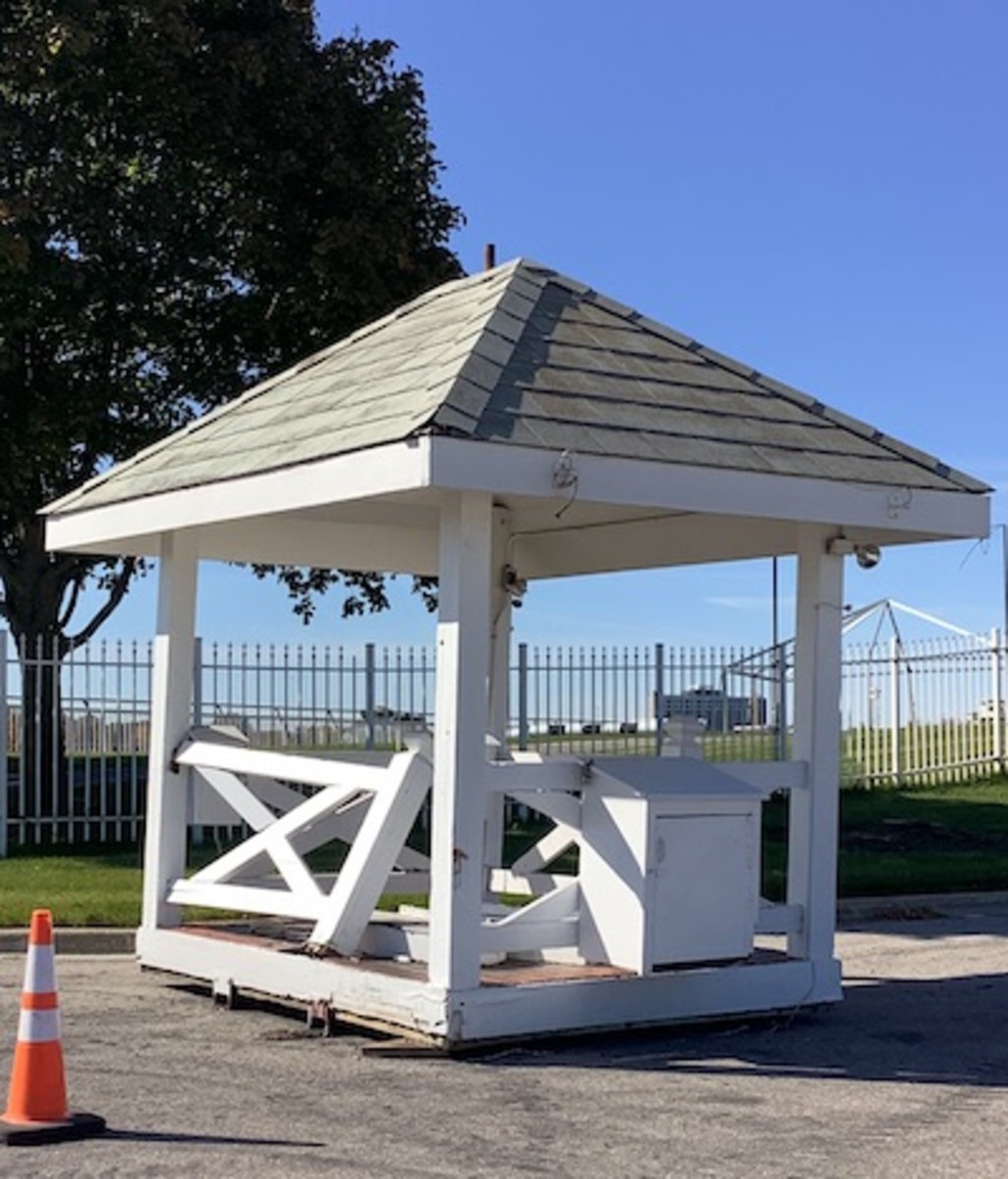
In contrast, the 7/8ths mile pole ($180) was quickly whisked away on a flat-bed truck, perhaps to become a garden ornament.

Clearing out the racing office was especially depressing. Near where jockeys' agents once gathered and gabbed a hastily scribbled message on a whiteboard said it all: “Farewell AP.” Someone had added a broken heart.
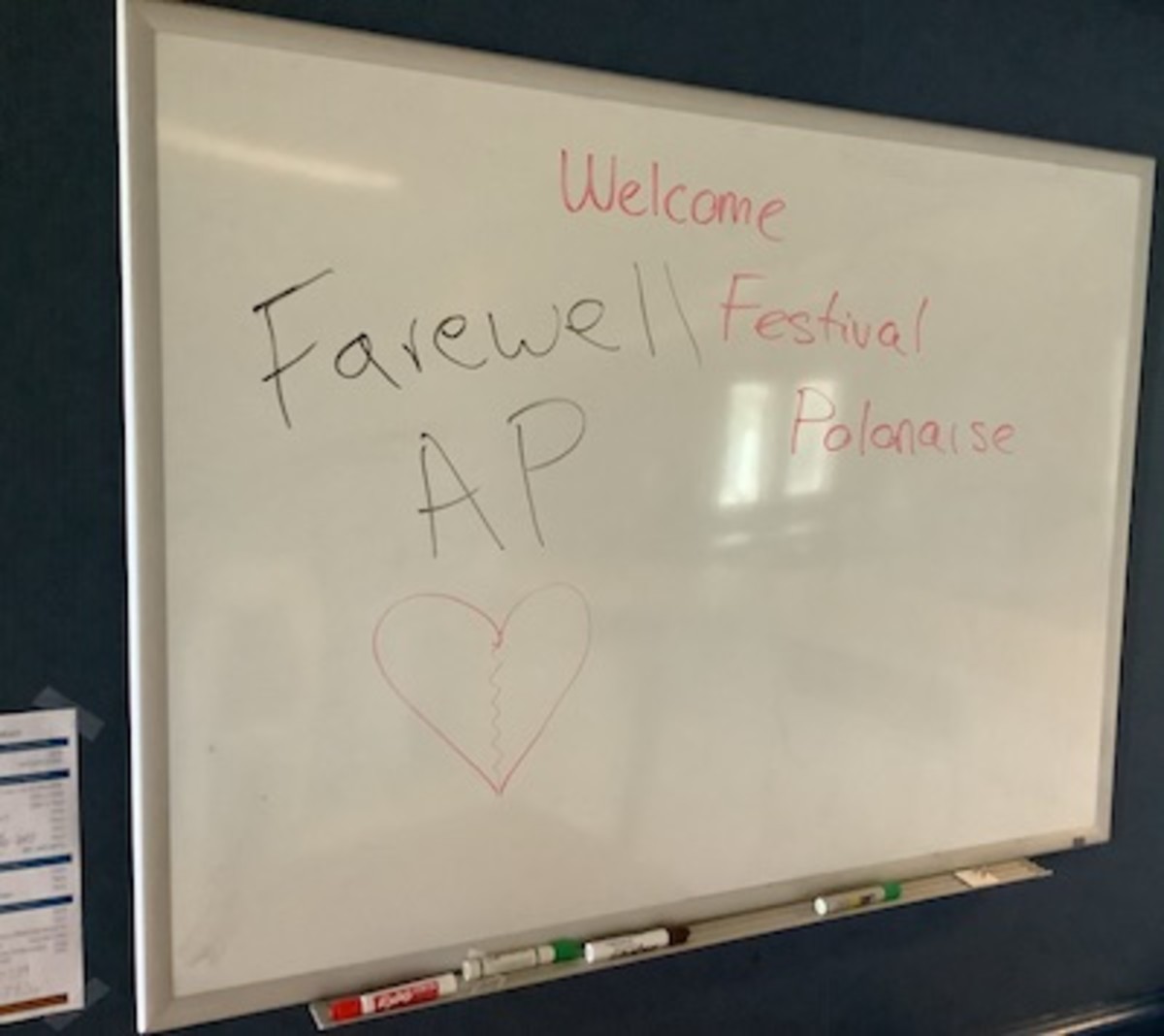
A sign over a desk echoed, “T-O-U-G-H G-A-M-E”.
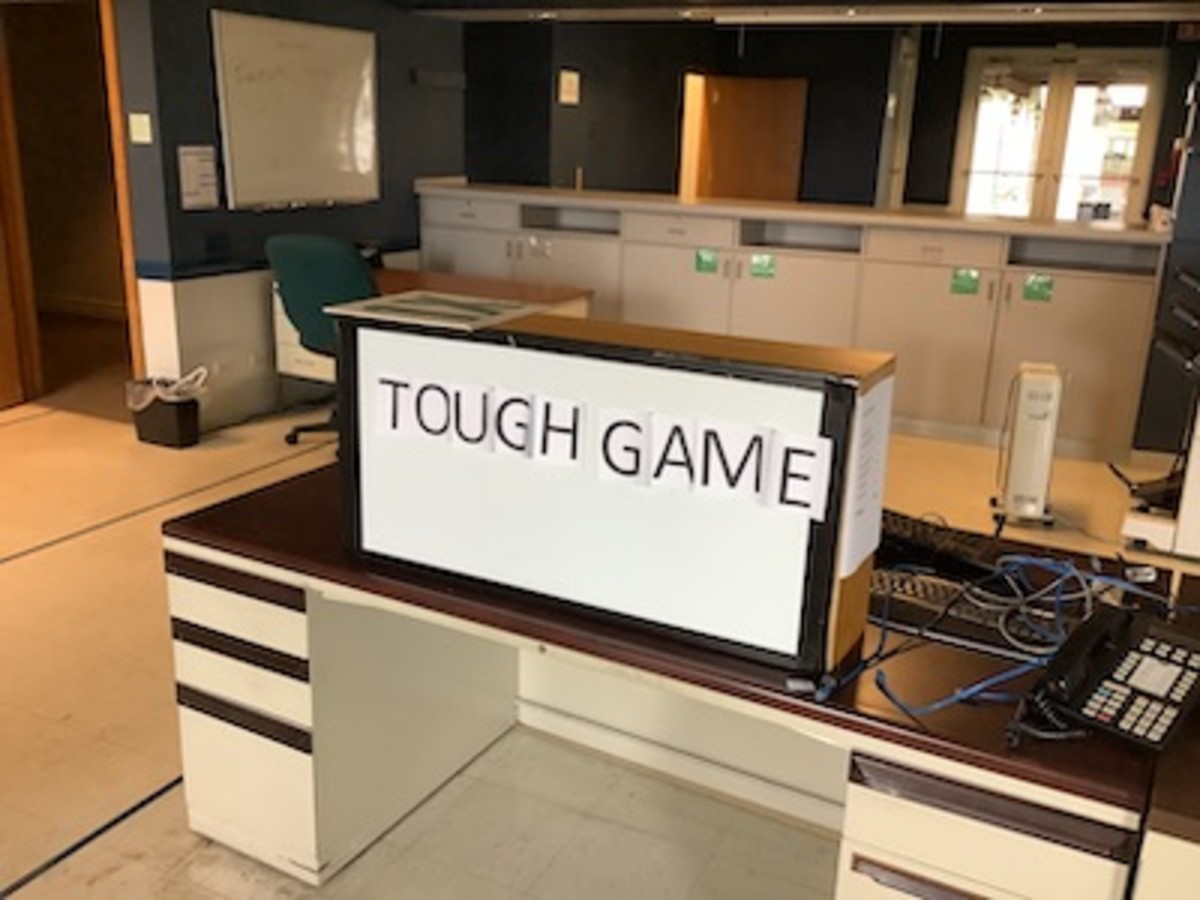
The office looked as though the staff had just gone home for the day, leaving condition books open on the desks, ready to take the next day's entries. But they would never return.
A clock in the jocks' room had stopped, maybe months ago. It, too, bore a Grafe Auction tag. It was only a matter of time before this, and other auction purchases, would appear on the secondary market.
Tomorrow: In the final installment of this three-part series, author Patti Davis takes a trip down memory lane with some who called Arlington Park home.
A lifelong racing fan, Patti Davis helped catalog Arlington Park's assets. She is a writer and editor based in Chicago.
The post You Can’t Always Get What You Want: Going, Going…GONE! The Auctioning Of Arlington Park, Pt. 2 appeared first on Horse Racing News | Paulick Report.
